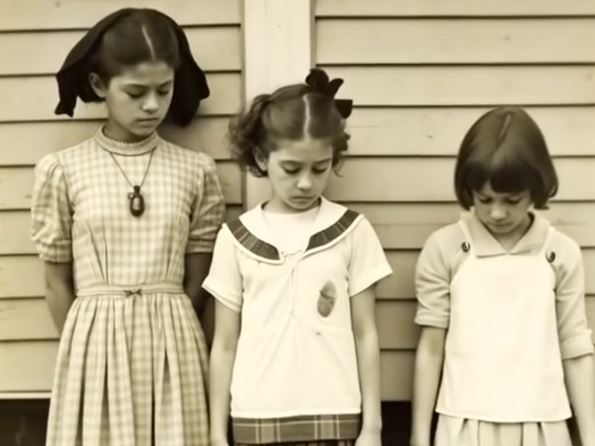In 1912, three girls — Pearl and Viola Turner, and their friend Penelope — stepped outside the deafening Porte Mill in Gastonia, North Carolina, for a brief photograph. Nine-year-old Pearl had already worked there for three years, her small hands tending dangerous machines in the cotton-filled air. None of them knew that their image would one day rewrite history.
Over a century later, Professor Sonia Abernathy and her assistant Marcus were digitizing the Thomas Himmel photo collection when they found the image labeled Three Mill Girls in Gastonia, 1912. Marcus discovered that Pearl Turner lived until 1964 — an unusually long life for a child mill worker, most of whom died young from lung disease caused by cotton dust exposure.
Curious, Sonia approved facial recognition and image enhancement. When the results came in, they revealed something astonishing — subtle bone and skin markers around Pearl’s face consistent with a rare genetic resistance to respiratory illness.“This may be the first photographic evidence of genetic resilience to industrial disease,” Sonia announced to a stunned lecture hall.
Historians had long viewed mill children only as victims, but Pearl’s survival offered a new narrative — one of endurance against impossible odds. Her children later recalled her saying, “The mill tried to take my breath, but I wouldn’t give it up.” What began as a photo documenting exploitation became proof of extraordinary strength — a silent testament to resilience captured in the face of a nine-year-old girl who defied history itself.
